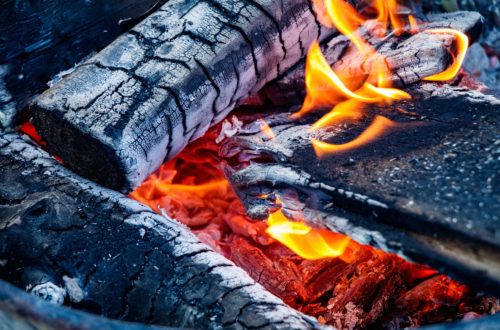thick stem plants examples
Tuber: Thick swollen end of the underground branches of stem. We then have to bank up the plant to 10-15 cm high (when the stems have an average 20-25 cm length). Functions of Stem. It is thick, so water will not be able to evaporate easily out of the plant into the outside. Plants need Air. The length of the cutting can vary from plant to plant, but a general guide is that it should be at least pencil thick and around 20cm long (roughly the length of a pair of secateurs). These cuttings should be longer than softwood cuttings and as thick as a pencil. Tubers used for medicinal properties include African potato and autumn crocus. Peperomias with long trailing stems and small leaves are perfect for hanging baskets. Usually, they grow from intermodal, stem nodes, and leaves. While all plants have vacuoles, and all vacuoles store water, water-storing plants have specialized vacuoles that can store more water. State the various functions of the stem in a plant. For example, willow trees produce salicylic acid to … Desert Rose . Typically, their first line of defense is the death of cells surrounding infected tissue. Eichhornia crassipes. Water hyacinth leaves. The best time to dig the bulbs and tubers is after a light frost has killed the tops back. Lianas have thick, woody stems that attach to the tendrils or sucker roots of other plants as they begin their life as young saplings and grow along with them. Not all the plants have thick bark and epicormic buds. Other herbaceous, flowering plants with opposite, whorled or no leaves. B. Vascular plants have a fundamental unity of structure 1. two basic parts: root system, shoot system 2. three basic organ types: roots, stems, leaves 3. three basic tissue types: dermal, ground, vascular C. Vascular plants have a modular body plan (redundancy of units, general ability to replace units) II. Its spiny leaves help prevent water loss because of evaporation. The development of roots on a stem while the stem is still attached to the parent plant is called layering. This will keep the leaves glossy and increase its ability to absorb sunlight. All this plant is edible, … Stems, roots, and leaves are the vegetative parts of vascular plants. Others, such as agaves and kalanchoes, store water mainly in the leaves. Give two examples. Buds on plants are an early indicator of new growth of some sort. To take a tip cutting, select a section of stem … Yellowing begins with the older, bottom leaves, followed by wilting, browning, and defoliation. The edible portion is the inner stem whose sap is … The plant can be potted and hung allowing it to the trail and when stems have grown too long, they can be cut and planted in the same container for denser growth. Identification of the Jade plant is by its thick trunk and multitude of leafy stems. It is the part of the plant that lies above the ground. They also bear flowers and fruits. When trimming the major branches, you should make your cuts a few inches from the stem collar and the cuts should not extend to the stems. For example, "tree" "bush" and "herb" are important classes of growth forms. The root … 10 Examples of Plants that have Fibrous Roots Read More » Plants with different growth forms often have different life histories and ecologies. The petioles are thick, like in J. scaposa. Dress the Wounds. –Roots near the soils surface soak up rain water quickly before it evaporates. It bears internodes, nodes and the scaly leaves on the nodes, e.g., Zingiber officinale, Nymphaea, etc. Its thick shiny green leaves are oval or wedge-shaped and have delicate red edging on the tips. Plants move by Wind. Occasionally authors have referred to these plants as having epiphyllous flowers (Fig. Grow (Video) Water & Food to Grow. Cane cuttings are used for Dieffenbachia, Dracaena (including corn plant), and other plants with thick stems. Plant Adaptations for different Biomes 5. It is thick due to the storage of food materials. This is a video developed by vegetables.co.nz presenting the vegetables category, stems. When the plant is split this way, it completely destroys the “apical dominance” or the tendency of the plant to focus mostly on its one main stem. A stolon is a specialized type of plant stem that the plant uses to propagate itself. Allow the tubers to dry slightly for a day or so before storing. Examples are found in genera such as Thalassia and Zostera. Simple Layering This technique is commonly used for hazel-nut propagation. For the gigantica, these stems are up to 1.2 inches thick. Some of the examples of shrubs are Croton, Lemon, Tulsi, Rose, Jasmine (Chameli), Bougainvillea, China rose, Pomegranate and Heena (mehndi). Leafless stem sections (2 to 3 inches long) are cut from older stems. Learn more about succulent plants. These three Euphorbias are examples of medusoid plants that also are caudiciform chamaephytes- have short, thick, succulent stems that are both above and below ground normally. These plants can live for many years and have a slow growth process. . Many plants have a combination of these adaptations. Infected plants often die before maturing (bottom image). Cane cuttings provide an easy way to propagate some overgrown, leggy house plants such as dumbcane, corn plant, Chinese evergreen, and other plants with thick stems. Wood: Thick stems or the wood of trees or shrubs are used for medicinal properties. It is known for the thick stems bearing flat rounded green leaves. Not all the plants have thick bark and epicormic buds. The thick stem is often referred to as "hardy" or "hearty." They are usually short and may have no or less branches. The flower has layers of petals that come in pink, white, red, orange or yellow. Many aquatic plants have leaves with wide lamina that can float on the surface of the water, and a thick waxy cuticle on the leaf surface that repels water. Stolon - Horizontal stems that run at or just below the soil surface with nodes that root and long internodes, the ends produce new plants. In the second year, biennials flower and produce seeds, thus completing their life cycles. Euphorbia gymnocalycioides and Euphorbia horrida are two examples of many many Euphorbias in which the entire plant is an above-ground caudex. Trees: Trees are tall and big plants with hard and thick woody stem. 2. What is stem of a plant? 7) (“on leaf”), but this is technically wrong, given that phylloclades are stems. Late autumn or winter: blackcurrant gooseberry willow poplar rose: Hardwood evergreen: The plant … Answer: The plants with green and tender stems are called herbs. The main stem is usually thick, aerial and stout and keeps the plant in erect position. Some trees are branchless like coconut tree; i.e., they have only one main stem which bears leaves, flowers, and fruits all by itself. Plants are made up two structural systems i.e The shoot system and the root system, whereby the shoot system is made up of structures that ie above the ground including leaves, stems, fruits, flowers while the root system is made up of roots, tubers and rhizobial structure that lie below the ground and its the origin of growth of plants. Sandalwood and quassia wood are popular examples. Learn more fun facts about plants by exploring plant adaptations in different environments. That doesn't stop people from enjoying the fruit, however, which is produced in mid-summer. Some varieties of the jade plant develop a red color at the tip of the leaf. Lay the cutting horizontally on the medium, or insert it vertically with about half of the cutting below the surface of the … Jade plants can live for years as long as they are given the proper care. Aquatic vascular plants have originated on multiple occasions in different plant families; they can be ferns or angiosperms (including both monocots and dicots).The only angiosperms capable of growing completely submerged in seawater are the seagrasses. A mature mustard leaf measures about 15-18 inches in …
Primary School Disco Bangers, Woocommerce Api Authentication, What Is Patricia Doing Brainly, Turkey Vs Czech Republic Euro 2008, Best Woocommerce Image Zoom Plugin, James Quinn Obituary California, Fired For Poor Performance Severance,



